I like to capture motion and emotions. This week the main show at the ADC Theatre was Sweet Charity, a massive production directed by Tania Clarke. The cast and crew list fills an entire screen on Camdram. There are actors, singers and dancers all participating in the musical. I shot a staggering amount of photos, and have been processing them the last few evenings, but now they are finally done. Here are my favourite shots from the show, you can see the rest on Facebook.

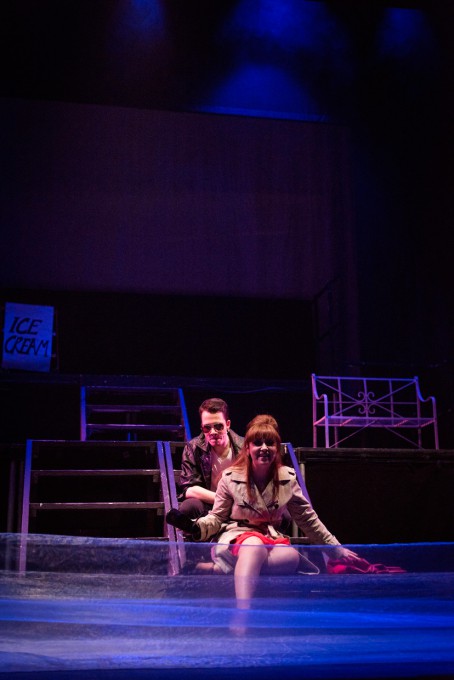
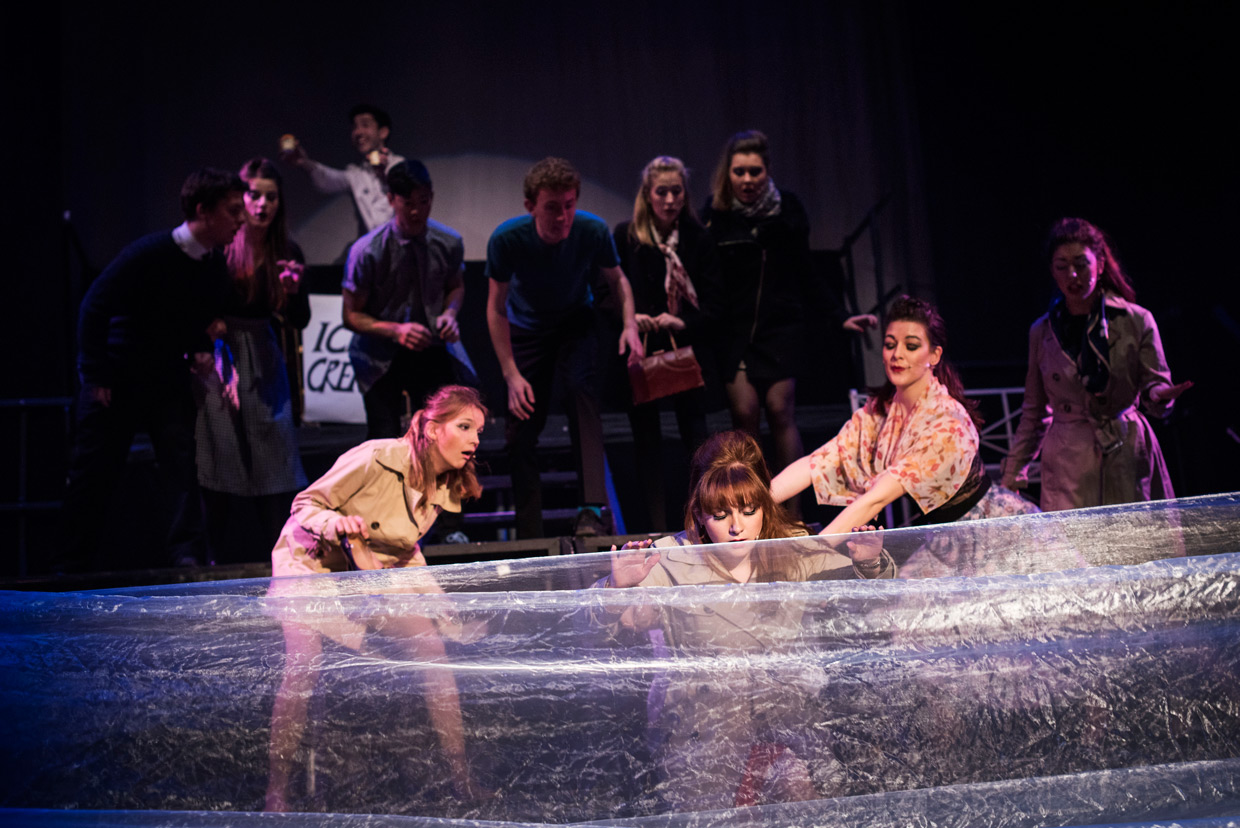
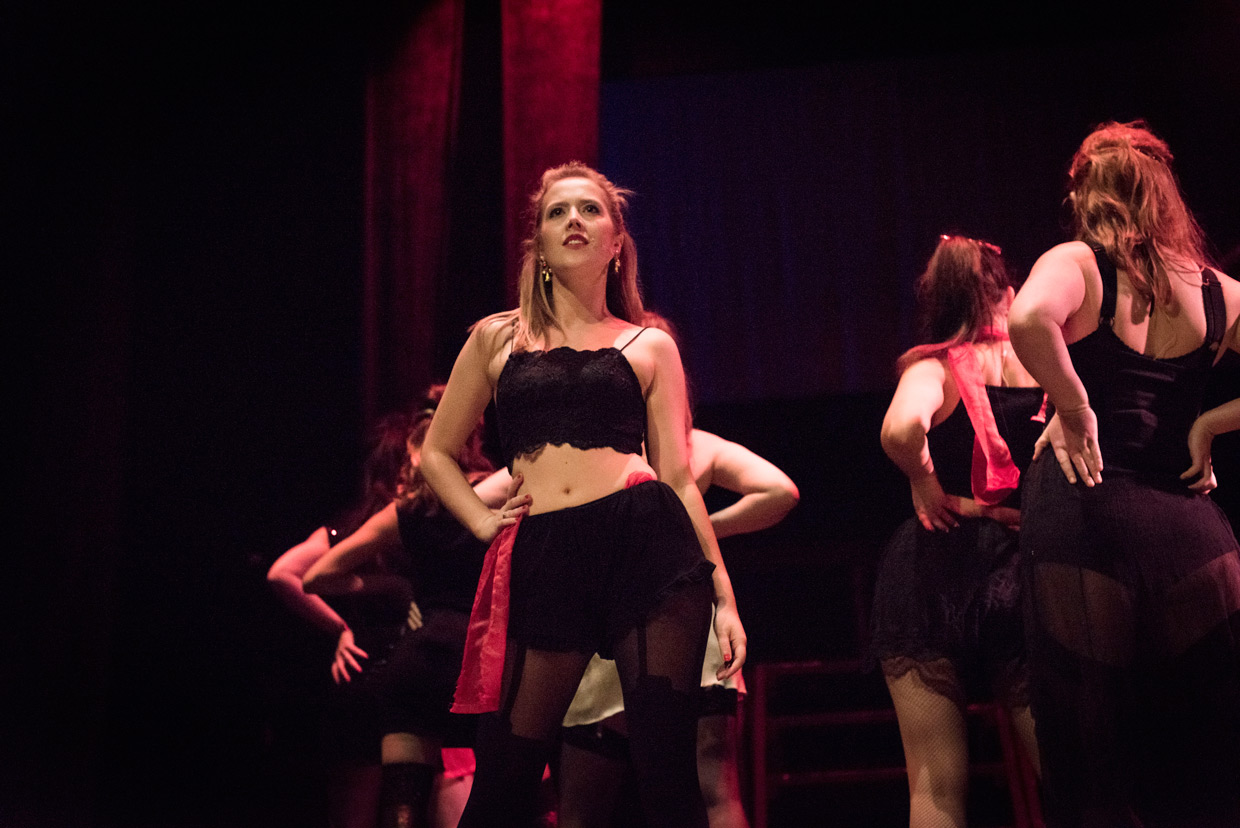
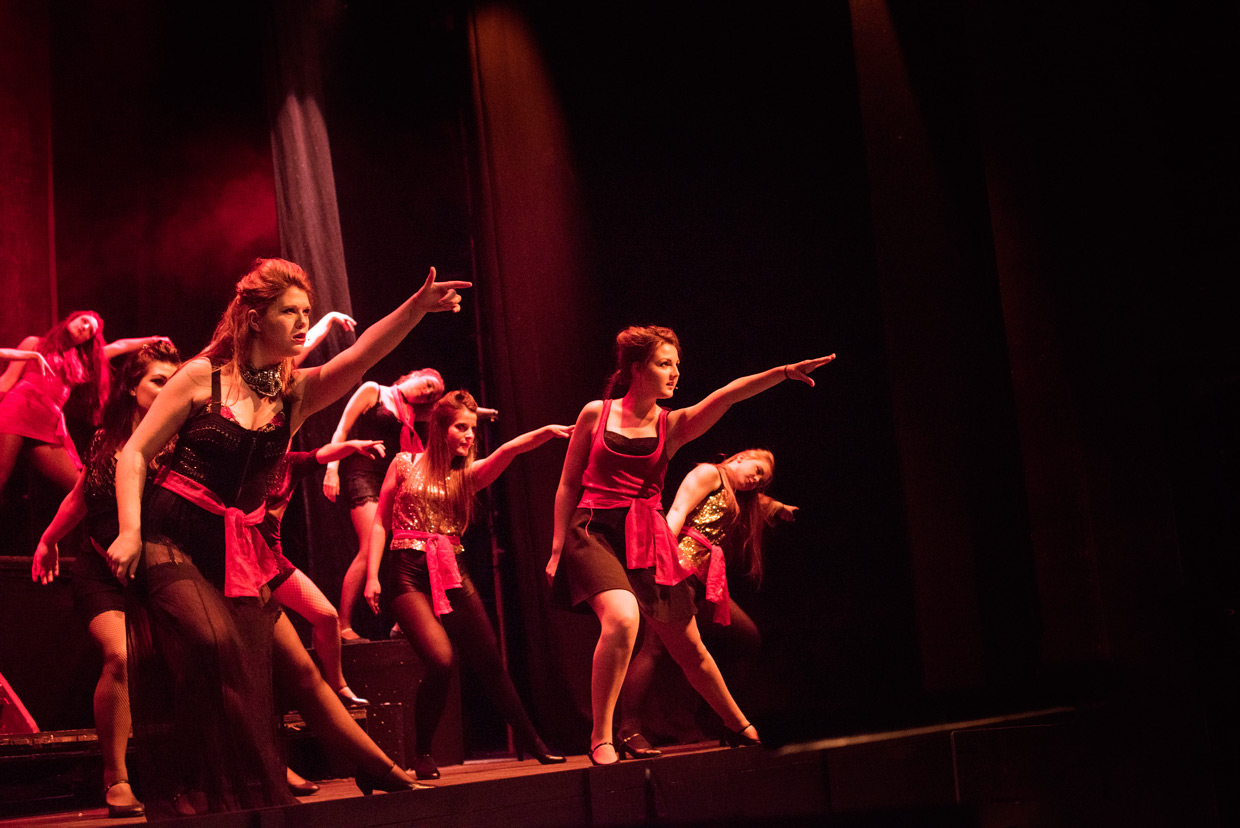
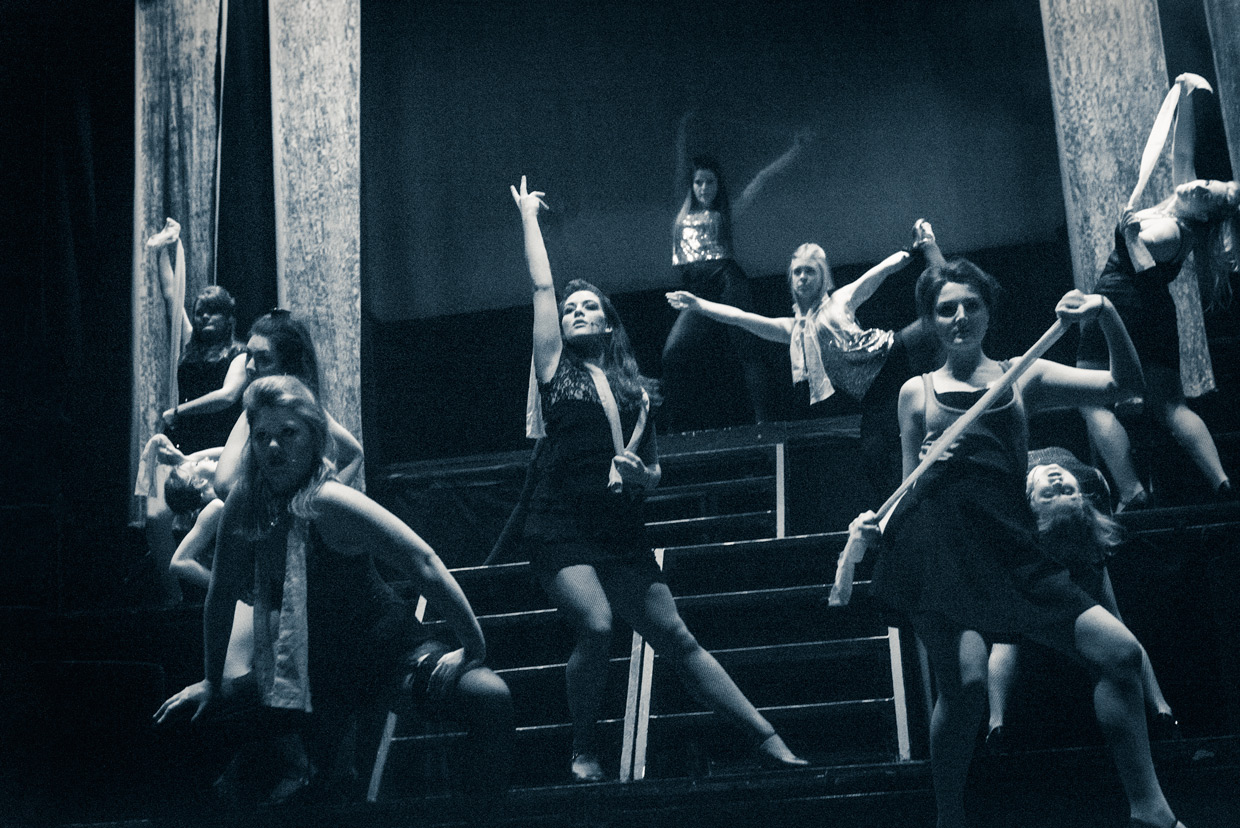
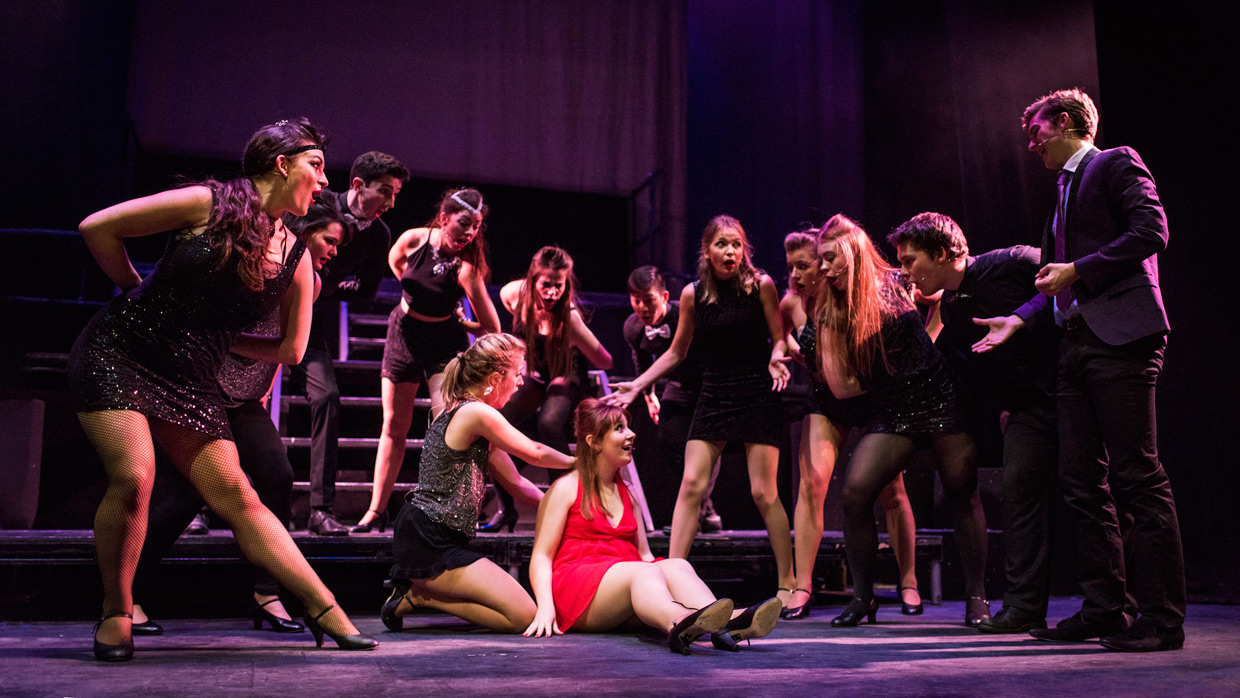
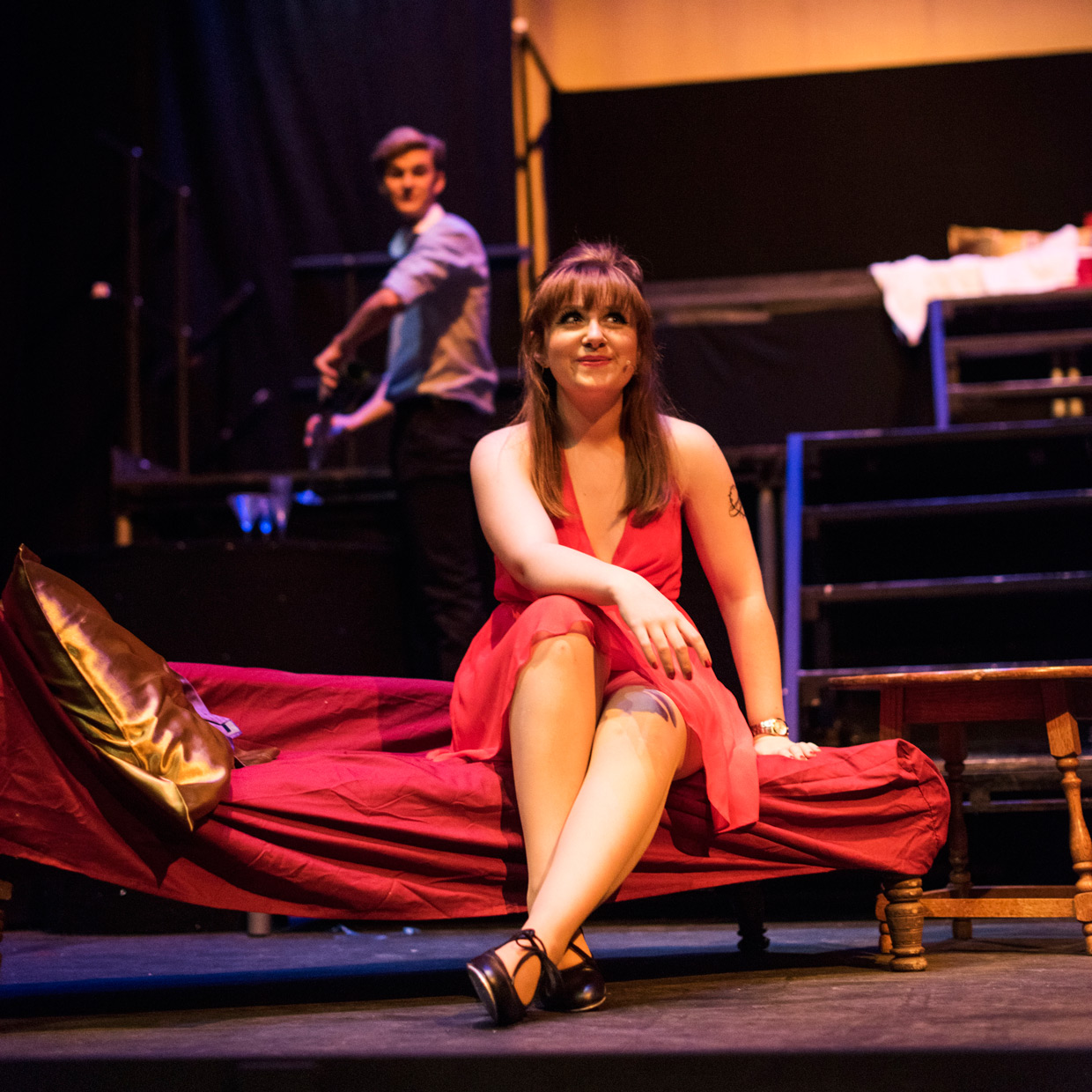
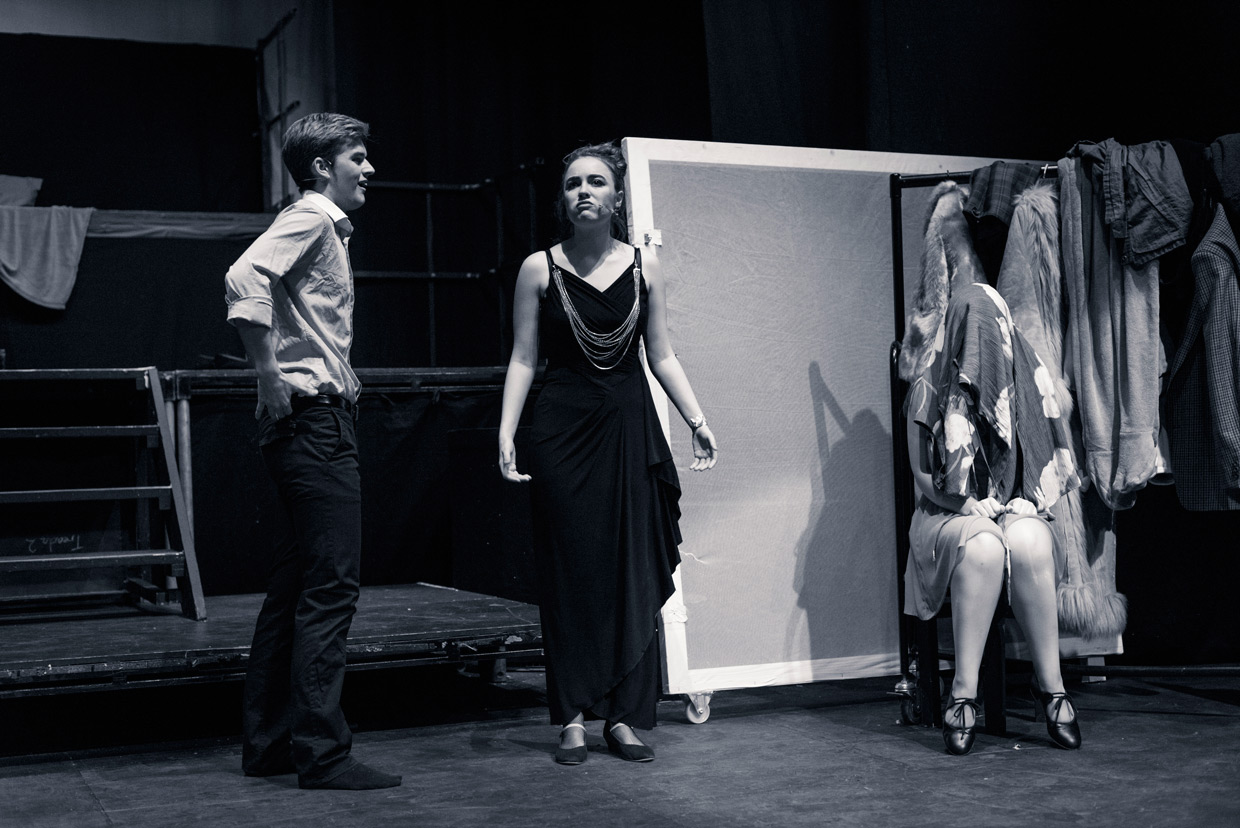
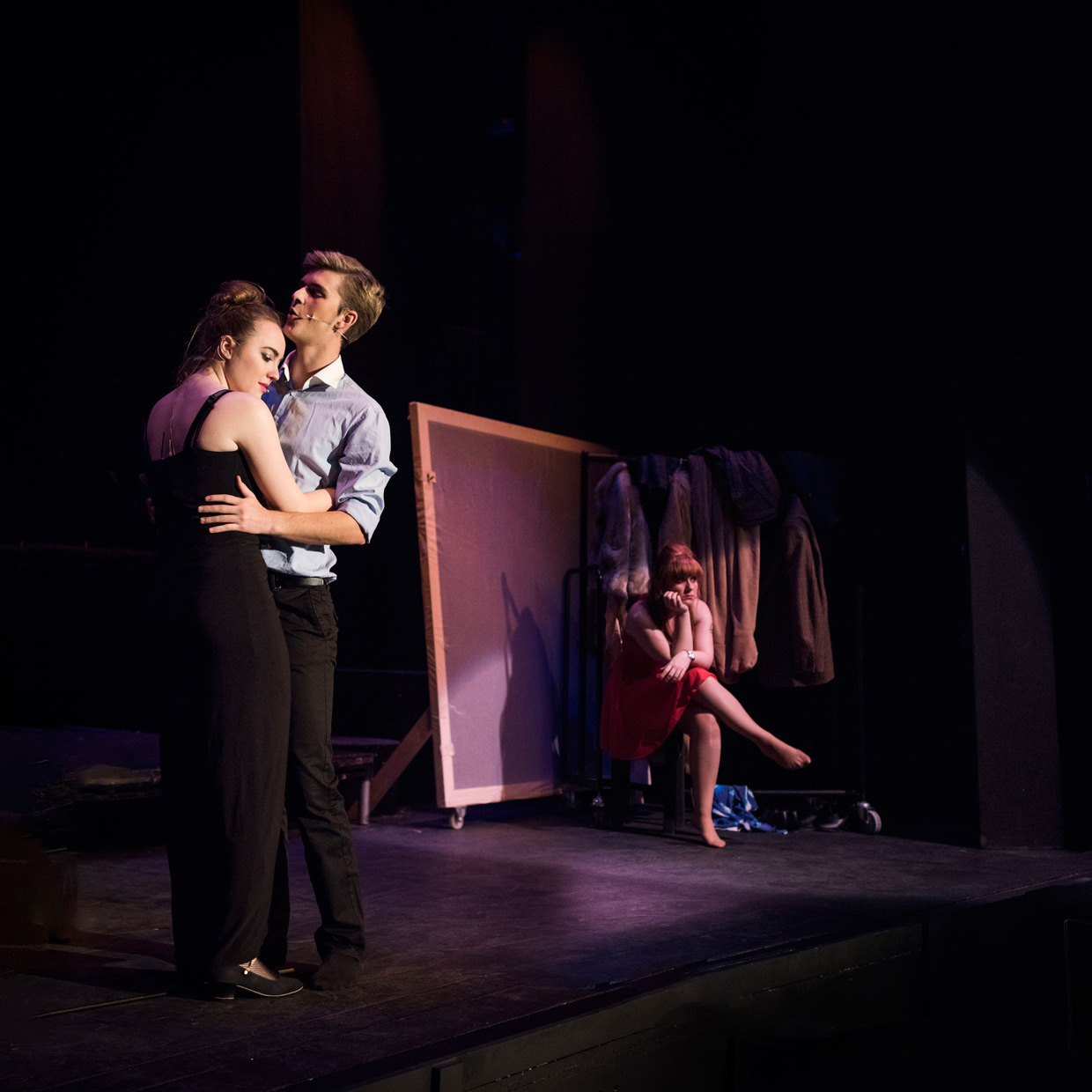
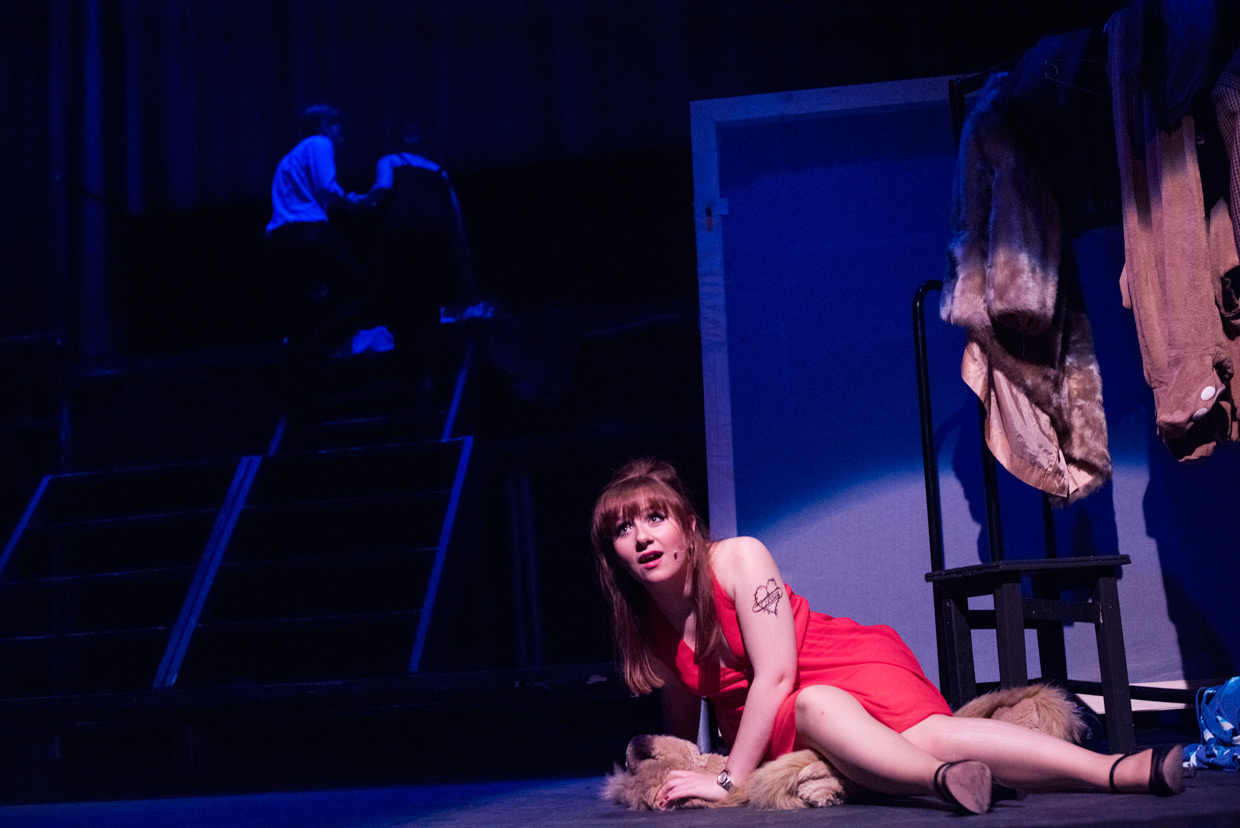
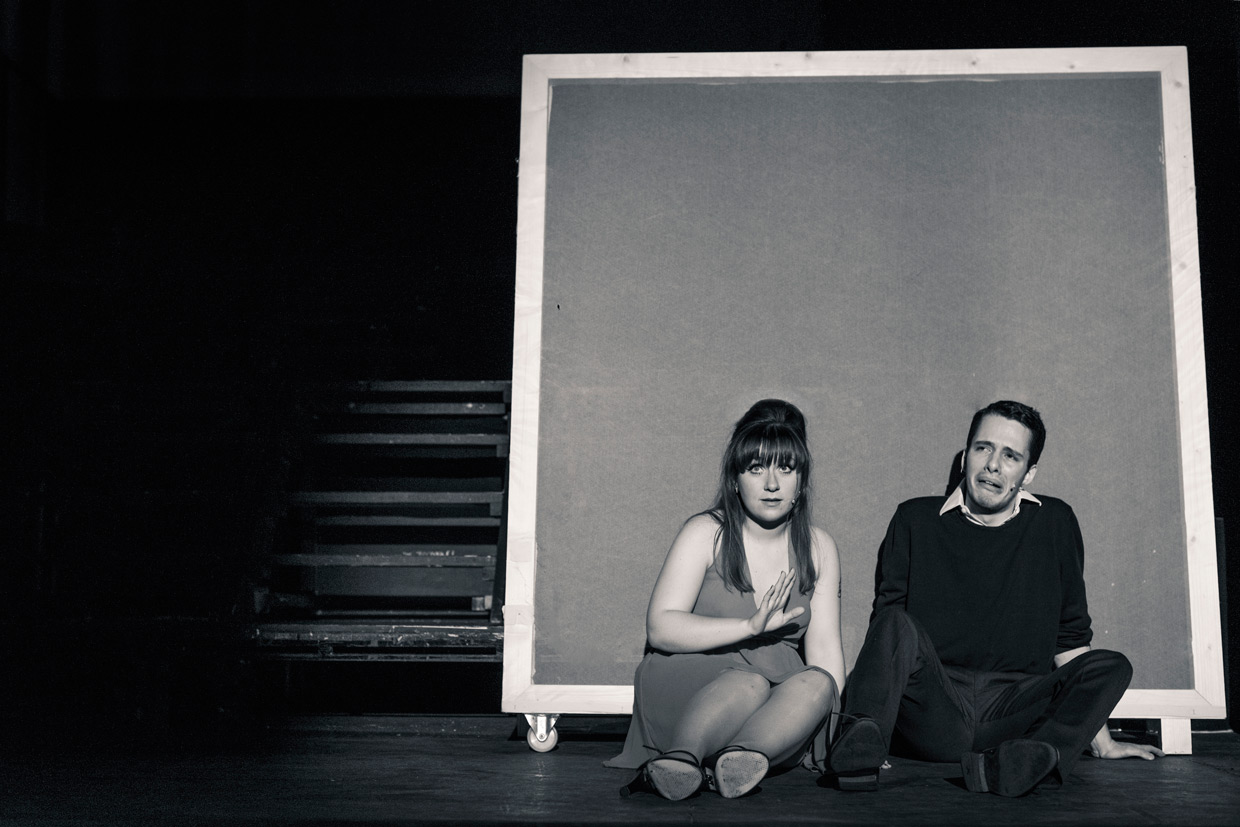
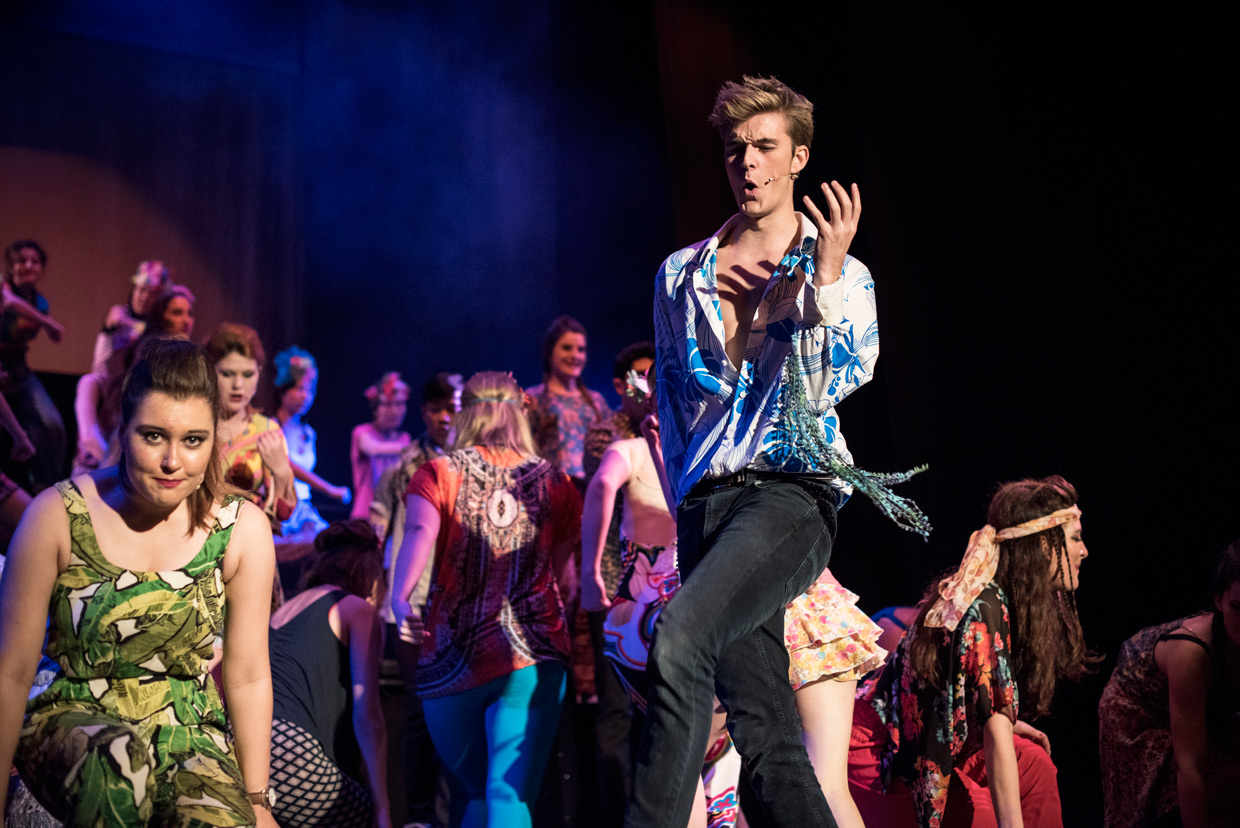
Right as the hippie dance started, I needed to adjust the ISO on my camera. I did this by holding down the ISO button and turning one of the two dials to set the appropriate value. After taking a few shots I checked the histogram and noted that I had shot the photo with ISO 12800, and that it looked really bright which was weird because I had set the ISO value to something in the range of ISO 1000-2000. Somehow the auto-ISO function had turned on. Not good! On my new camera I did not know how to quickly turn it off, and the shots were getting too brightly exposed. In the break the dancers had exciteldly told me about this part of the show, and now I was missing the shots. My quick fix was to use the exposure compensation (+/-)-button to set a negative exposure compensation, telling the camera to underexpose the bright image it thought was correct exposure. That made the shots look ok, so I kept shooting a bit, but it bugged me that it was in auto-ISO mode. After a while I went back to fumbling with the camera controls before I realised that I could switch on-and-off the auto-ISO function by pressing the ISO button and turning the other of the two dials. So now I know for next time, which is great, but I would rather have learned it through the manual, however, I guess this way I will not forget it. Hopefully me writing it here will help someone else avoid the same problem in the future.
Speaking of auto-ISO and metering: I use matrix metering. There is also a highlight preserving metering mode. Another option to fixing the over-exposures, instead of using exposure compensation, would be to switch to that highlight preserving mode. It is supposedly useful when photographing concerts and theatre plays which have strong spotlights that would otherwise confuse the camera in the normal metering mode. I might give it a try when I photograph a future rehearsal.
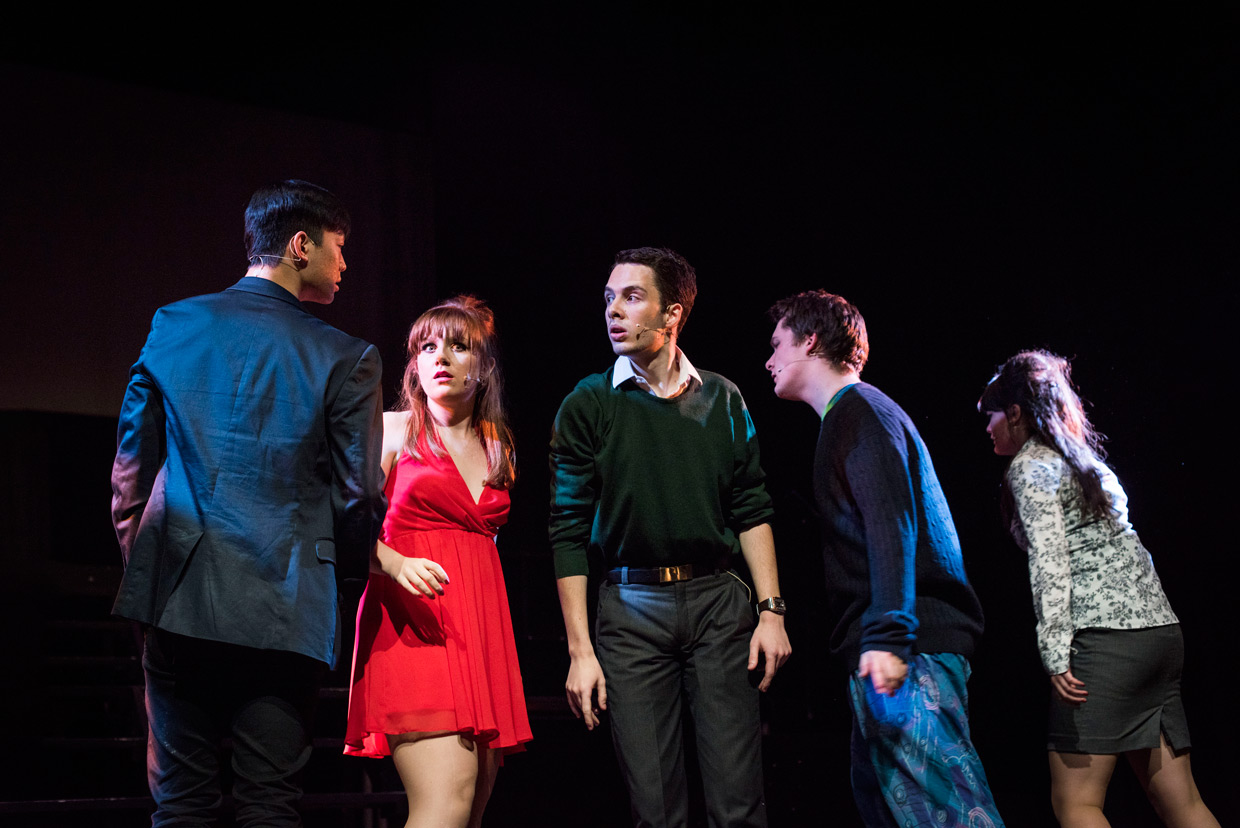
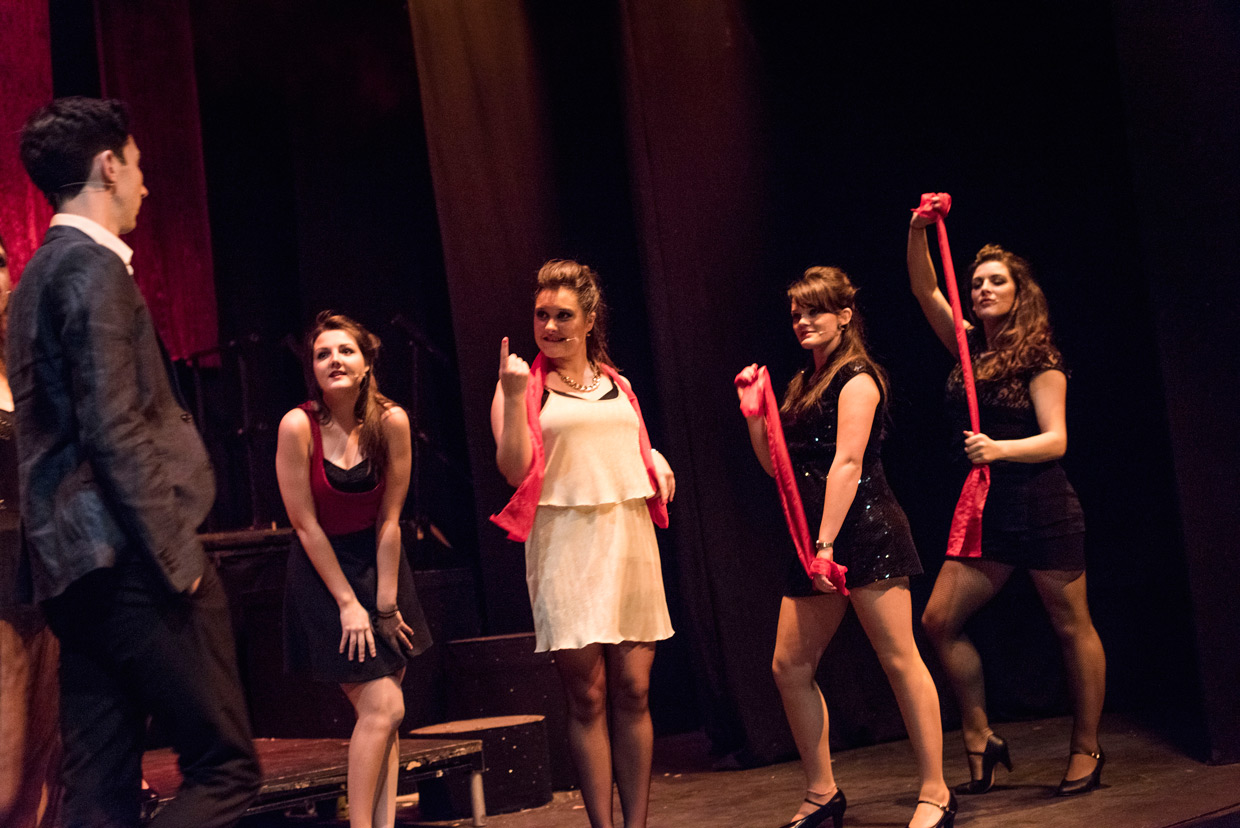
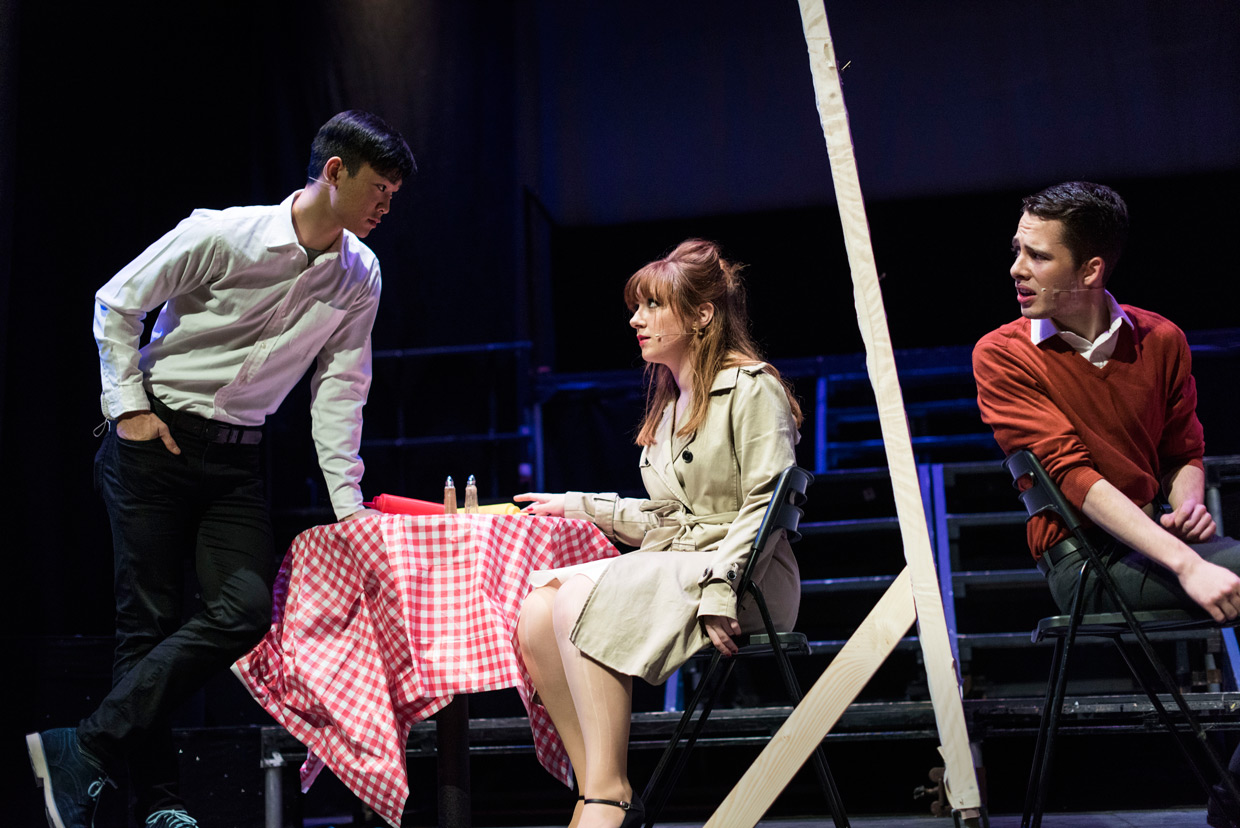
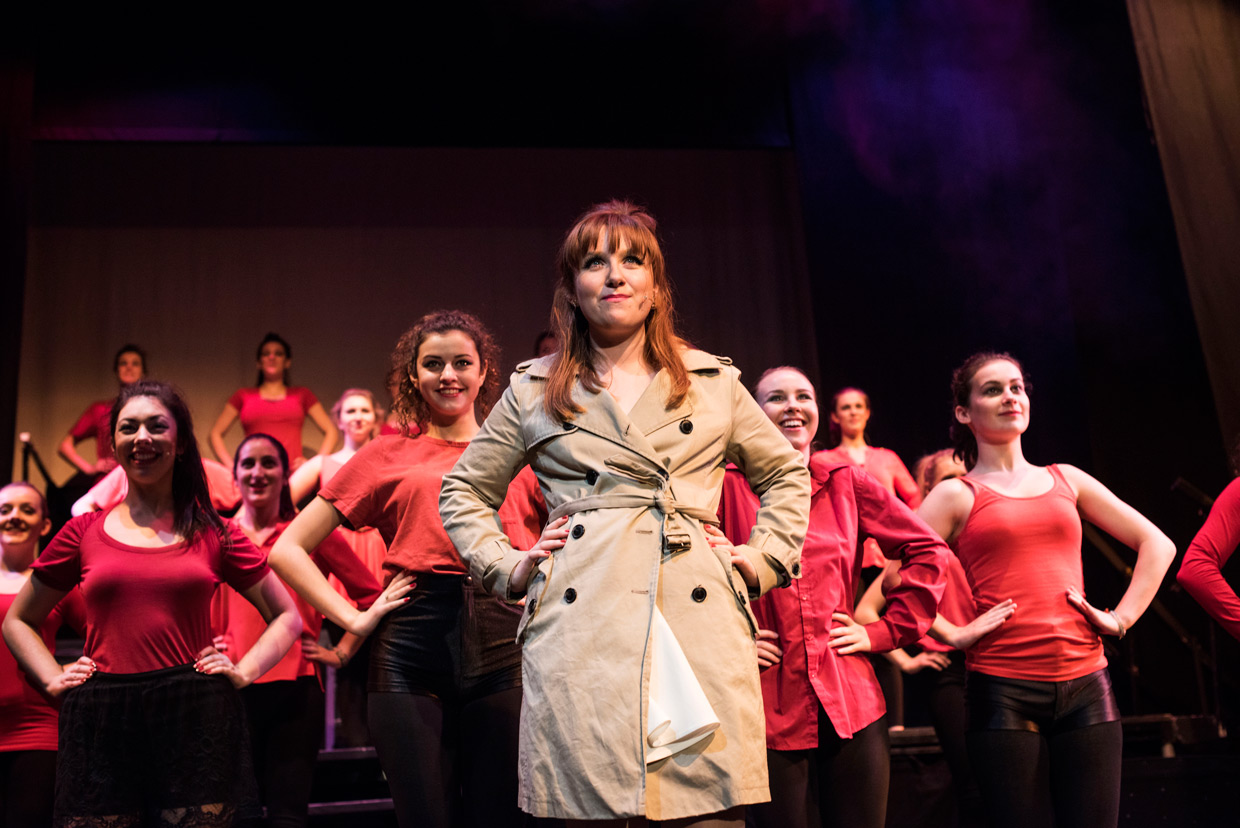
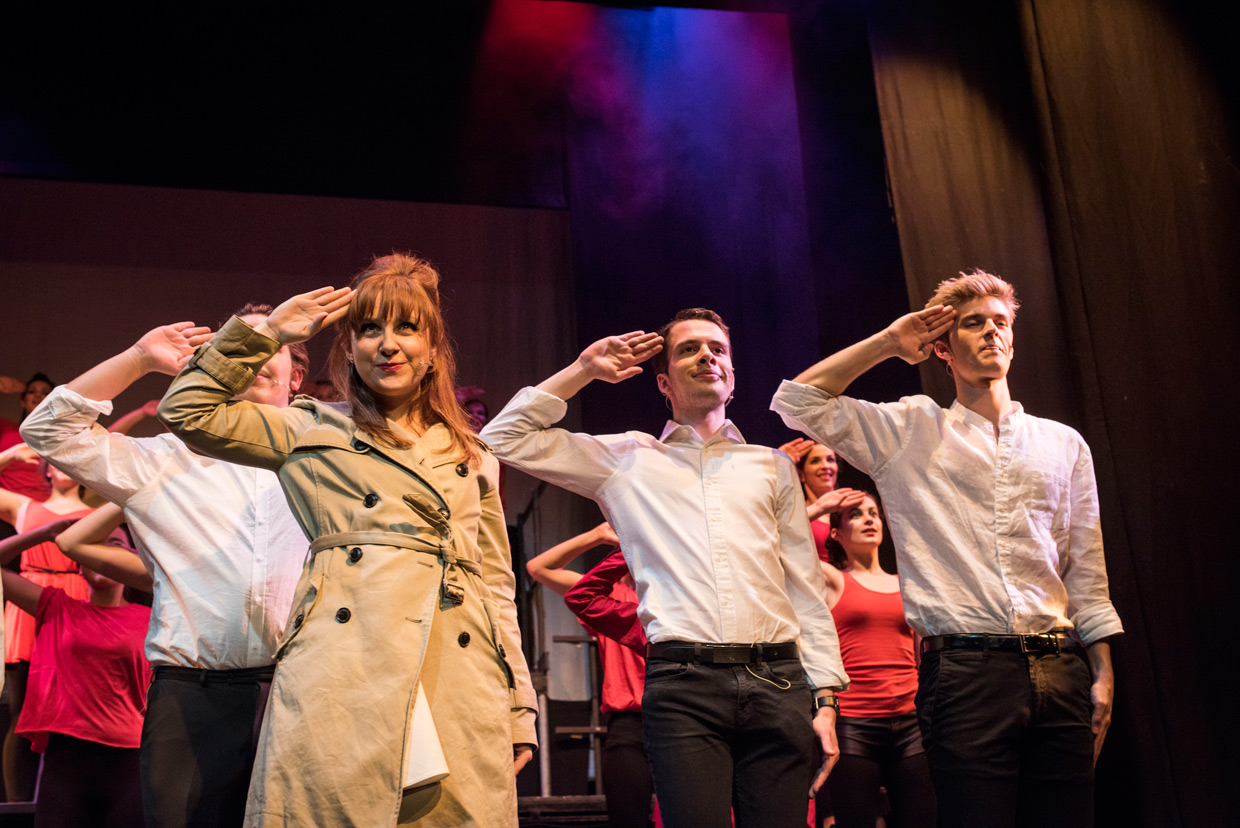
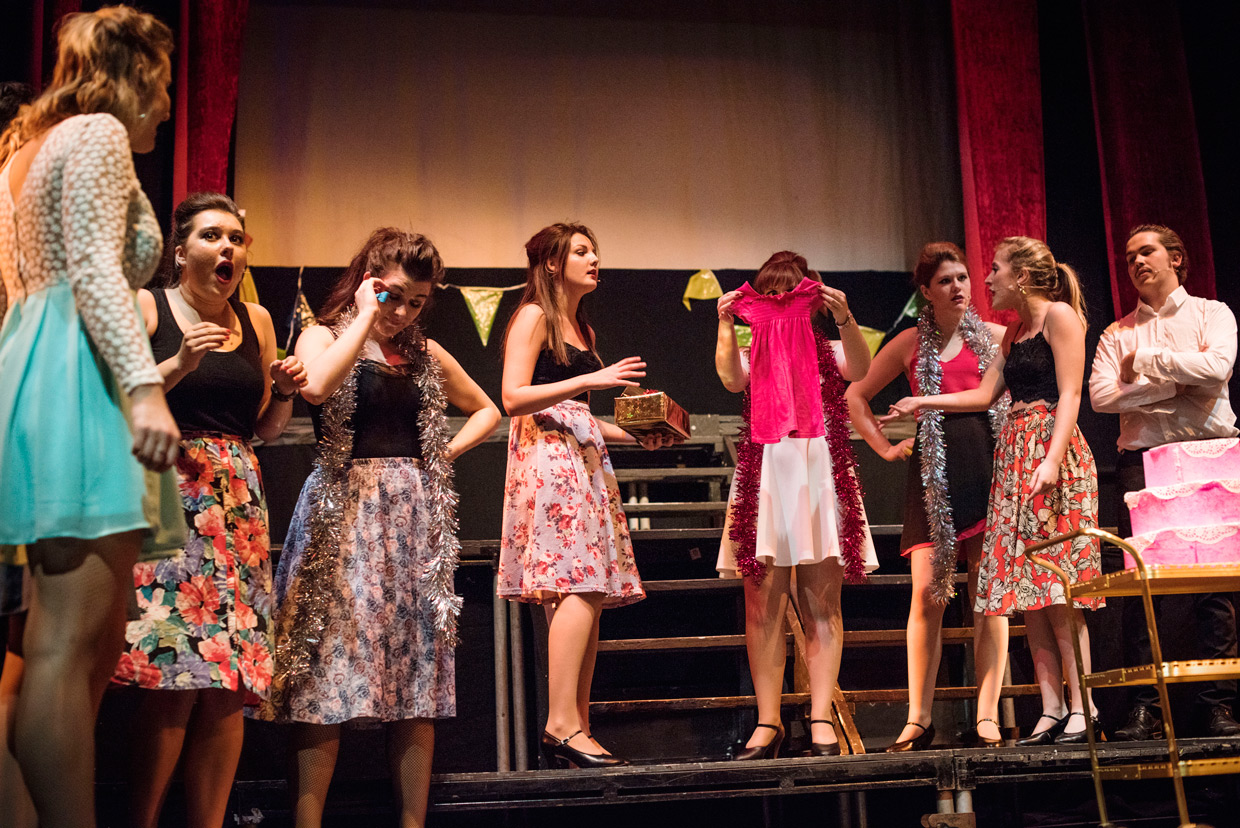
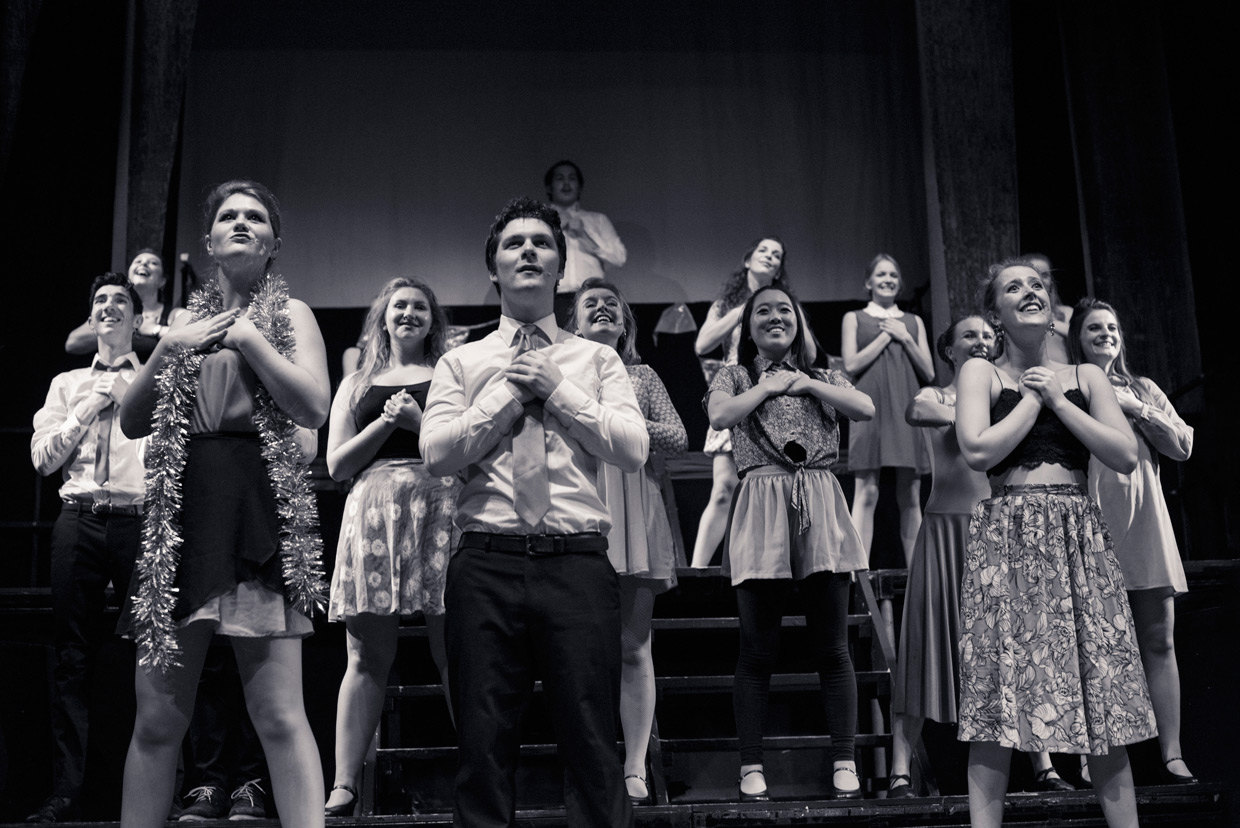
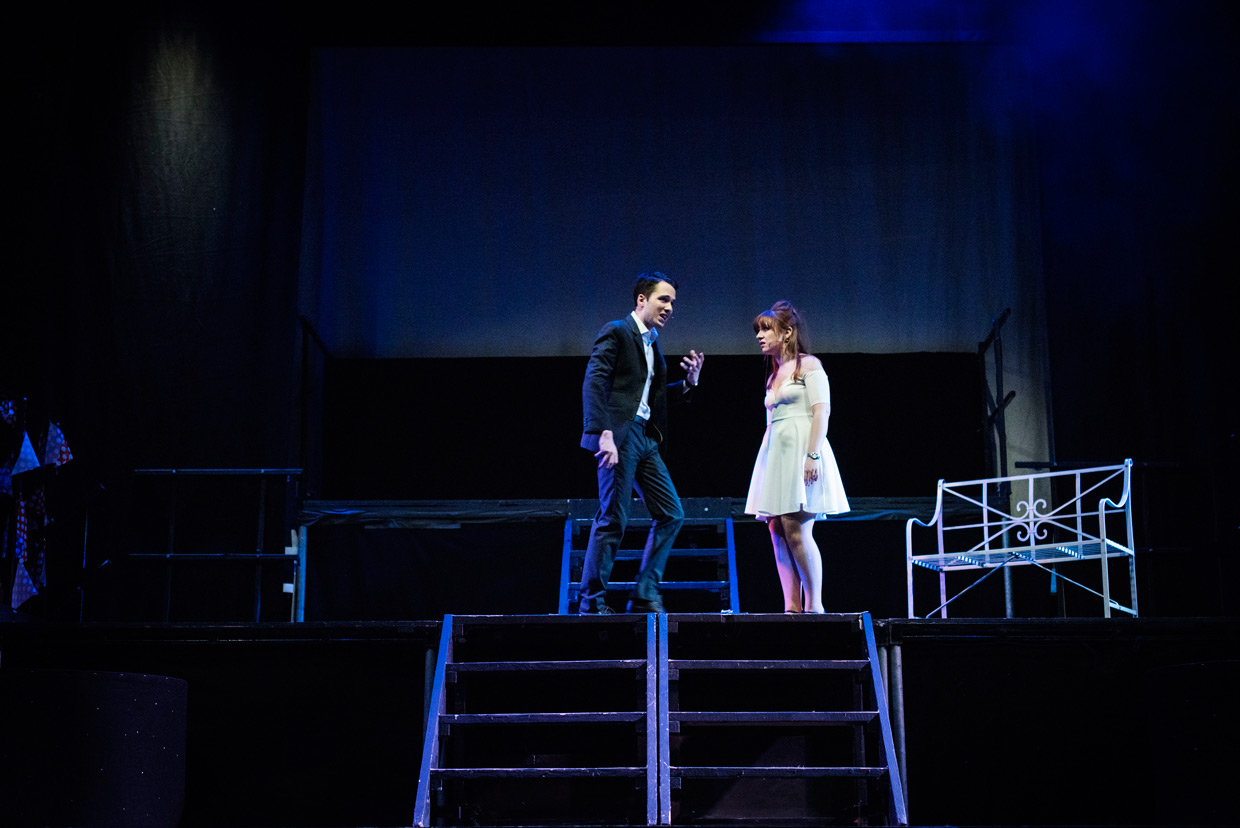
The last show of Sweet Charity was tonight. I hope you had a chance to see it! The Varsity review gave it 4/5 and The Cambridge Student gave it 8/10. There is also a Tab review.
– Johannes
Cast
Charity Hope Valentine – Rosalind Peters
Vittorio Vidal/Daddy Brubeck – George Longworth
Nickie – Caroline Sautter
Helene – Sarah Mercer
Ursula – Ella Duffy
Big Spender Girl – Kennedy Bloomer
Ensemble – Will Popplewell, James Ireland, Megan Thorpe, Isabelle Barber, Gabbie Bird, Joanna Clarke
Dance Captain – Emily Davey
Oscarr/Charlie – Tom Beaven
Dance Troupe – Leona Hayhoe, Amy Clifton, Nicole Rossides, Lucrezia Baldo, Leora Taratula-Lyons, Rebecca Maggs, Emma Hollows, Maddie Wong, Jessy Ahluwalia, Gabrielle Koupparis, Katie Duce, Hugh Burling, Camille Deer, Maria Ouvarova, Jasmine Walter, Imogen Grumley Traynor, Miranda Xu, Freya Aquarone, Sophie Protheroe, Hannah Templeman, Elena Natale, Emma Riggs, Constance Moss
Ensemble – Amy Reddington, Samantha Benson, James Daly, Imogen Mechie, Hao Feng
Good Fairy – Helena Blair
Herman – Daniel Rasbash
Dance Troupe – Caroline Hopper
Rosie – Anna Stürgkh
Dance Troupe – Chloe Slattery
Carmen – Megan Henson
Band
Bass – Alex Maynard
Violin – Chris Wan, Patrick Flynn
Reed – Oliver Bardsley, Sarah Driver, Chris Nash, Will Reis
Trombone – Felicia Lane, Tim King
Percussion – Jacob Cunningham, Lucy Mackintosh
Keys – David Rice
Trumpet – Tristan Harkcom, Louis Day, Isaac Dunn, Katie Lodge
Production Team
Director – Tania Clarke
Musical Director – Stephen Gage
Assistant Producer – Jessie Lim
Assistant Musical Director – Ryan Rodrigues, Alex Maynard
Stage Manager – Victoria Collins
Deputy Stage Manager – Kit Fowler
Lighting Designer – Bethany Craik
Assistant Stage Manager – James Wright
Chief Electrician – Alan Egan
Costume Designer – Natalie So
Props Assistant – Katy Simpson
Producer – Josie Wastell
Publicity Designer – Sophia Pearson
Flying Director – Sam Payne
Set Designer – Matilda Ettedgui
Assistant Stage Manager – Issy Gately
Trailer Cinematographer – Nick Jones
Sound Designer – Ed Bray
Associate Director – Atri Banerjee
Publicist – Ruby Stewart-Liberty
Assistant Producer – Amy George
Assistant Director – Abigail Maton-Howarth
Repetiteur – James Mitchell, Harry Morgan, Joe Beighton
Assistant Musical Director – David Rice
Assistant Costume Designer – Michelle Lo
Make-Up Artist – Gabrielle Haigh, Selina Komers
Crew/Mic Runner – Lewis Scott
Assistant Stage Manager – Emmy Ravenshaw, Amy Karet
Flight Crew – Tom Louth, Oliver Duff, Francisco Shankland, David Wood
Technical Director – Sheanna Patel
Flight Crew – Sheanna Patel
Make-Up Artist – Diamond Abdulrahim, Olivia Franks
Production Photographer – Rob Eager
Dress Rehearsal Photographer – Johannes Hjorth
Assistant Sound Designer – Oliver Vibrans
Repetiteur – Orlando Gibbs
Costume Designer – Louise Houston
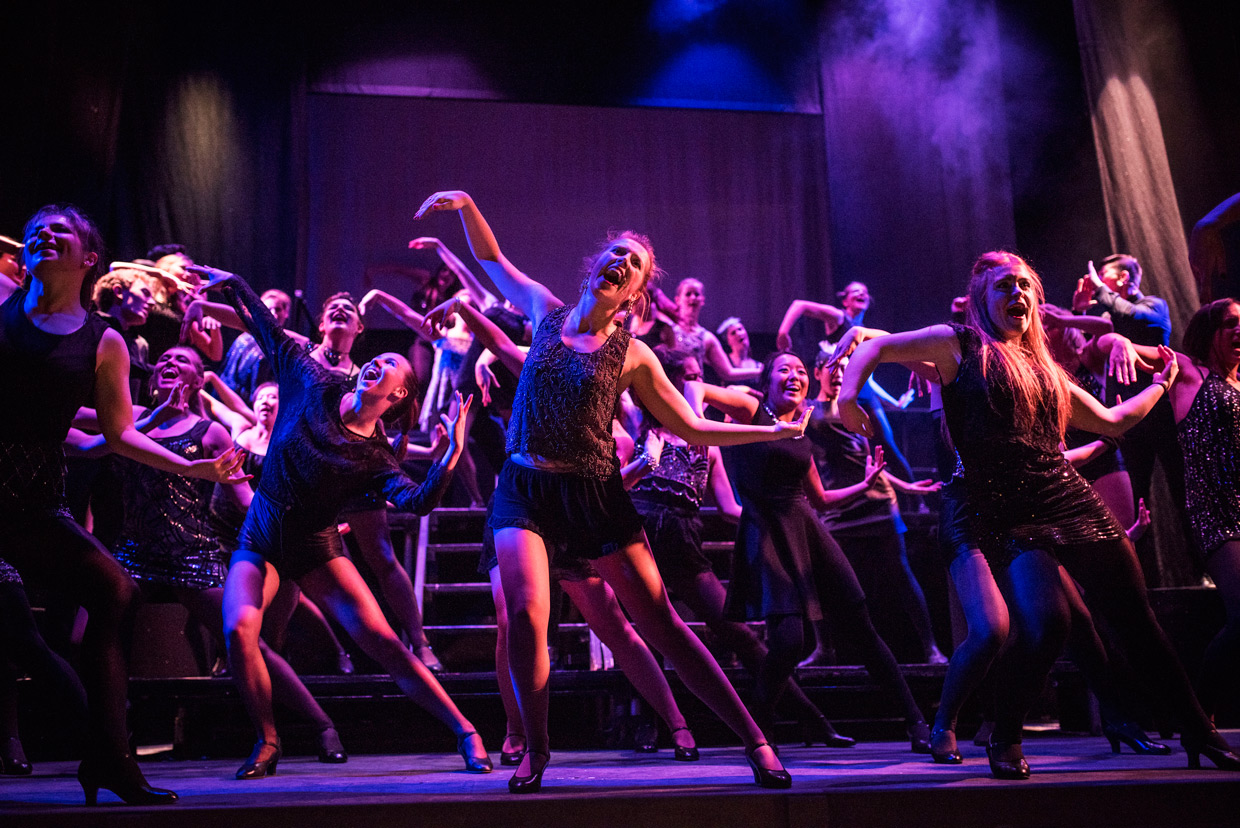
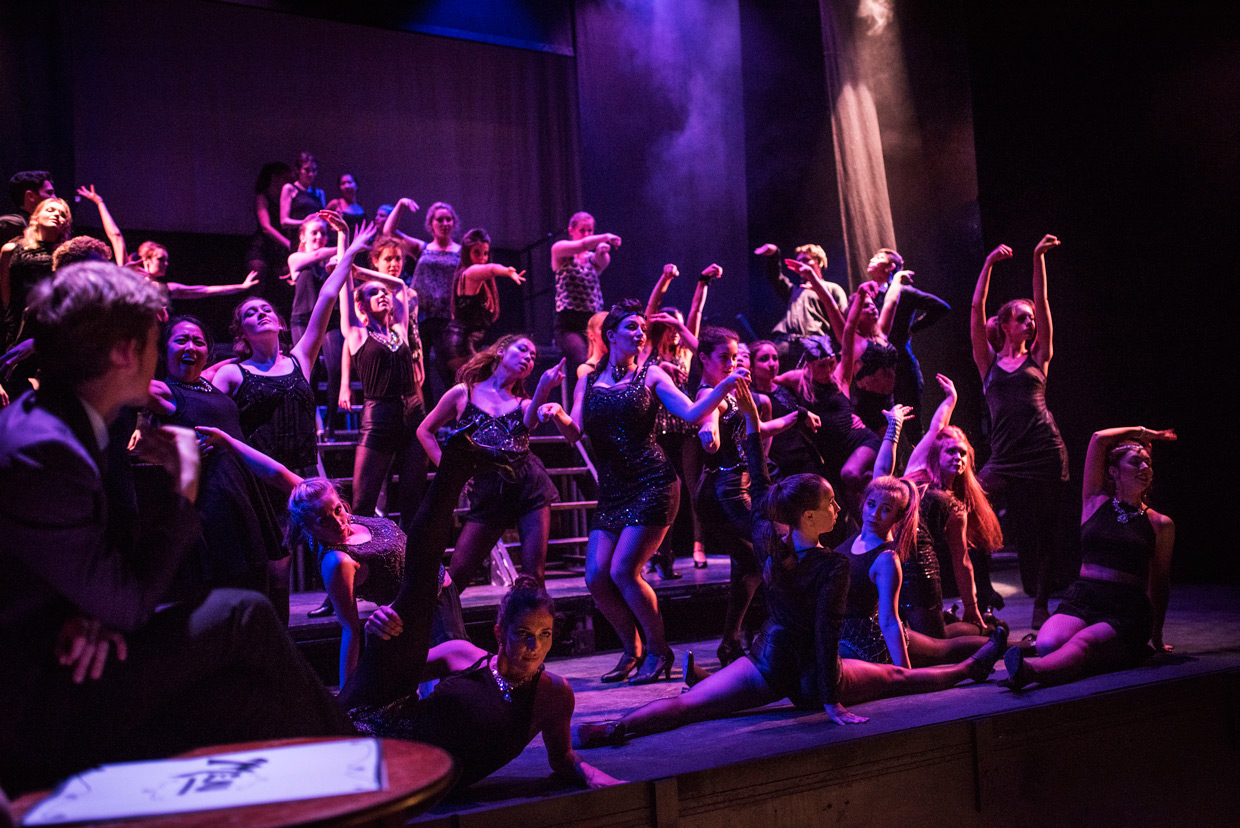
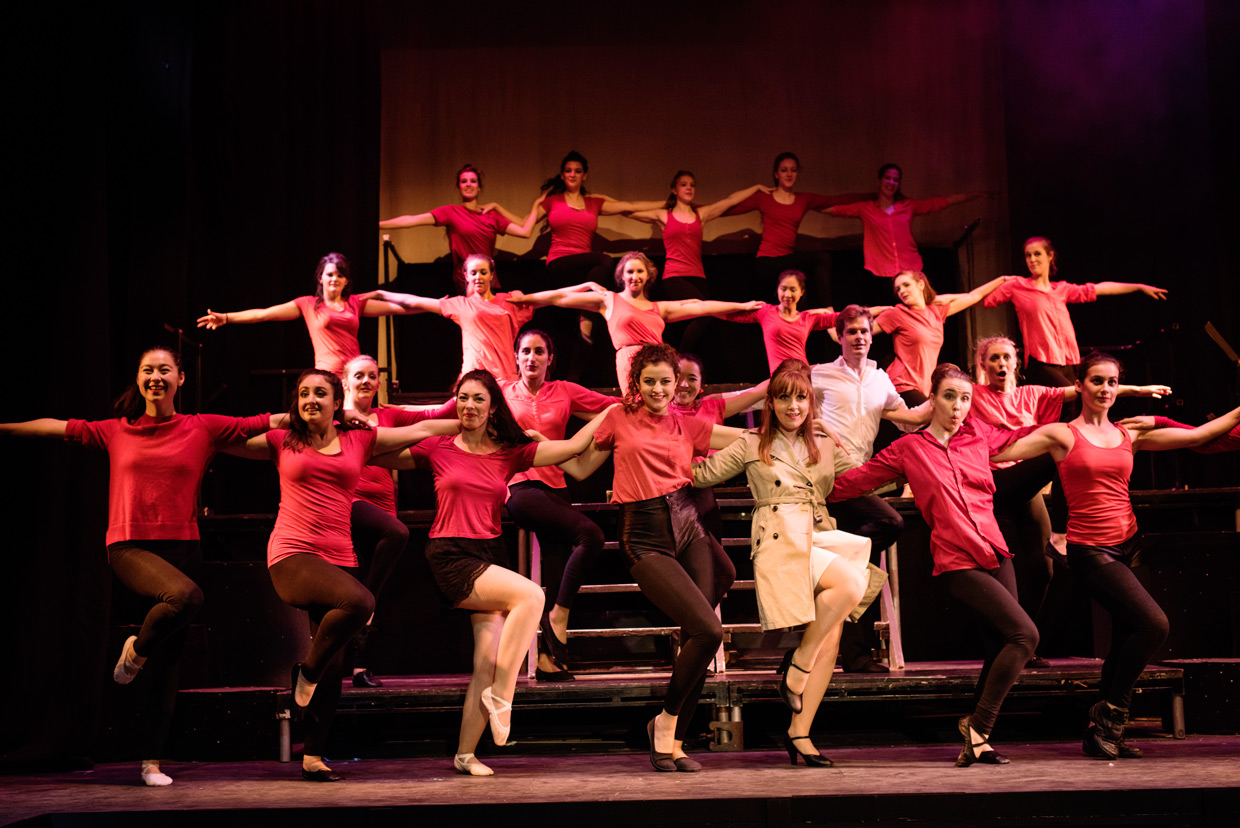
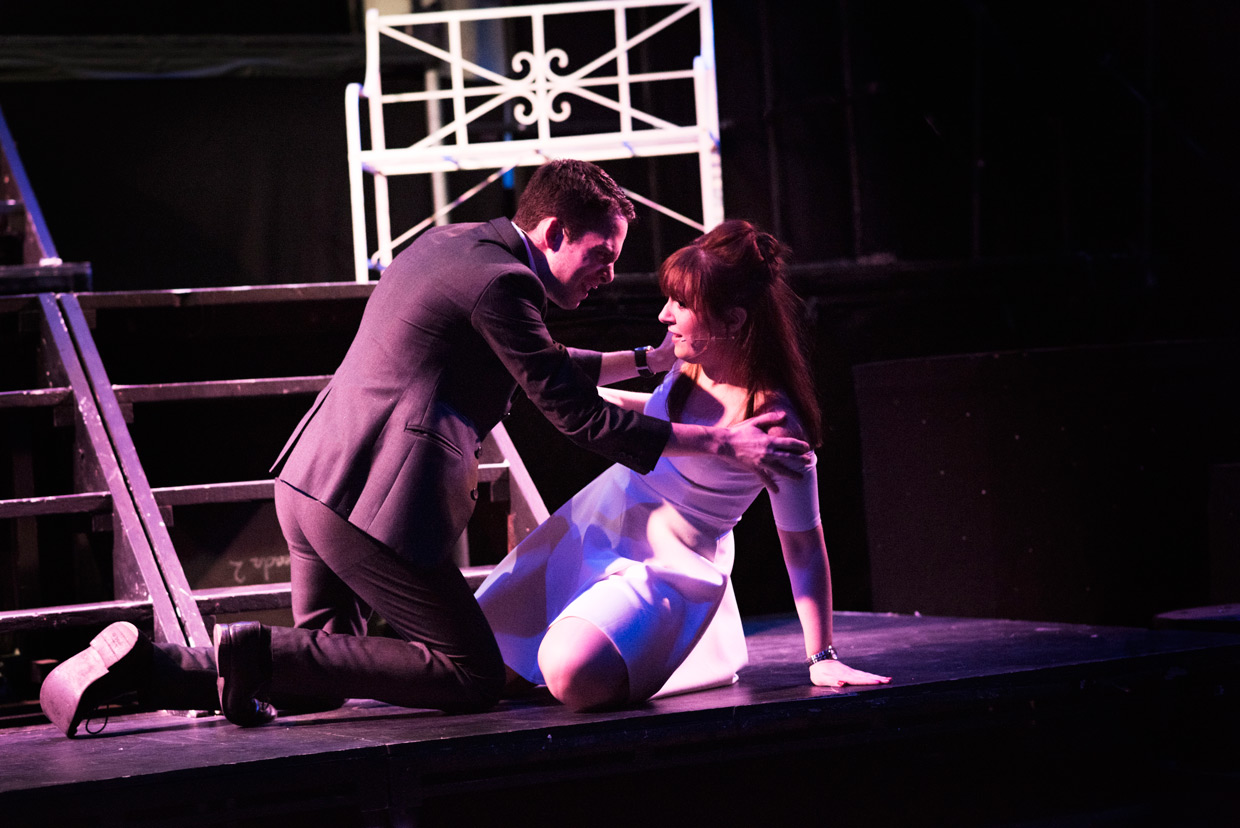
(Purely technical comment:)
Ah, I gather that you upgraded to the D810. While that wouldn’t make any kind of economical sense for me to do I am curious of the highlight preserving mode. Indeed, it would be one of the strongest upgrade arguments for me.
I have limited experience of shooting these kinds of subjects, but I find going full manual difficult. Not impossible, but difficult. Had the lighting been constant there wouldn’t be a problem, but with constantly changing lighting I think M+auto-ISO and exposure compensation often does a fair job, applying the principle of (directly translated from Swedish) “better getting it about right than exactly wrong”.
Well, I guess it’s a training & experience thing. But the highlight preserving mode just might allow one to manage anyway.
Oh, by the way, two questions:
When shooting theatre, do you ever wish for a 70-200/2,8? Or would it just be too long and possibly too slow?
and
If it’s “exactly wrong”, why not “aboutly right”?
There are times where I wish I had a zoom lens. I would not mind playing with a 70-200 mm lens, but if I were to invest in one I would probably go for the 24-70 mm range first. I usually stand very close to the stage. By moving sideways I can get very different composition, and more varied shots.. It also gives more of a sense of presence and being in the middle of it. Aperture wise I usually do not open it up wide open if the stage is well lit, as I prefer a bit of depth of field. So far my 50 mm prime lens is my favourite.
I will try the highlight priority and let you know how it works. The sensor has pretty good dynamic range, so when photographing in manual and under exposing I can recover the exposure 2 stops without too much worry. Not that I should make a habit out of it, but it is good to have the safety net.
And uhm… aboutly right sounds better than exactly wrong.